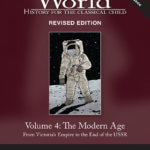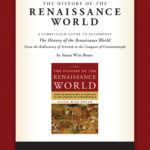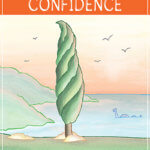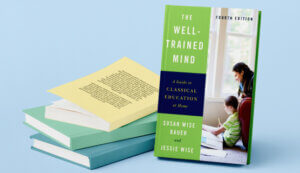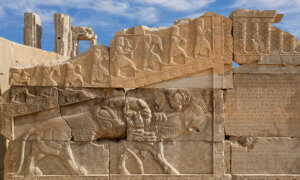
In the fall of 2005, history professor Larry Schweikart was on the book-promotion circuit, talking up his “unbiased” history of America, A Patriot’s History of the United States.
Schweikart wrote his book as a corrective: “I found bias, ranging from merely tolerable to exceptionally bad, in almost all of the major textbooks,” he told the Carolina Journal. To find out whether a history text is “biased,” Schweikart suggested in 2010, apply the “Reagan test”: consult the index, and find out whether Ronald Reagan is given full credit for ending the Cold War. If he isn’t, the book is “politically slanted” and untrustworthy.
Whether or not you agree with him, Professor Schweikart was simply exchanging one set of biases for another. Yet he continued to insist that The Patriot’s History was entirely spin-free. “Ultimately,” he wrote, in an essay about the book published by the Mackinac Center, “learning ‘just the facts’ of the American past leads a student to inevitably conclude that the United States is the best place on earth, and that it has acted…far better than any other nation at any other time.”
The popularity of The Patriot’s History (which temporarily topped best-seller lists) suggests that quite a few parents and teachers were searching for a “just the facts” approach to history—and took Schweikart’s assertions at face value.
But history is never a simple chronological narration of “facts.” Even when it claims to be “unbiased,” history always has an argument at its center: a basic assertion about how and why human events unfold as they do.
“The United States…has acted…far better than any other nation at any other time” is a fairly obvious argument. But a look at any history for young readers will turn up others—sometimes much more subtle. Consider, for example, this excerpt from Hendrik Van Loon’s classic The Story of Mankind. About the Phoenicians, Van Loon writes,
They bought and sold whatever promised to bring them a good profit. They were not troubled by a conscience. If we are to believe all their neighbours they did not know what the words honesty or integrity meant. They regarded a well-filled treasure chest the highest ideal of all good citizens. Indeed they were very unpleasant people and did not have a single friend….They were practical business men and could not spend hours engraving two or three letters. They set to work and invented a new system of writing which was greatly superior to the old one. They borrowed a few pictures from the Egyptians and they simplified a number of the wedge-shaped figures of the Sumerians. They sacrificed the pretty looks of the older system for the advantages of speed and they reduced the thousands of different images to a short and handy alphabet of twenty-two letters.
Certainly this passage contains “just facts”: the Phoenicians streamlined the Sumerian writing system and created our alphabet. But it also contains an argument. When Van Loon writes that Phoenicians (all of them) “were not troubled by a conscience,” he is telling young readers that there is such a thing as a racial character. (The French are snooty, the British are drunks, Americans are rude.)
This is an argument about human nature—and, as it happens, a particularly loaded and dangerous one. It reappears prominently in American white supremacist writings, such as Wade Hampton’s infamous 1890 essay “The Race Problem”:
[T]he white and black races are essentially different, not only in physical organization, but in mental characteristics. This assertion is not made by way of reproach or opprobrium, nor does it apply to those of the race in this country—and there are many of them—who have proved their capacity to be numbered among our reputable, estimable, and valuable citizens…they are the exceptions which prove the rule, which, from time immemorial, has shown that they are not fitted to govern that great race before which all others have gone down—the masterful, the conquering and the unconquerable Caucasians.
Reading Van Loon certainly won’t turn young students into white supremacists. But Van Loon’s casual assumption that “racial character” exists has the potential to make such arguments more convincing.
Consider another example: H. E. Marshall’s explanation for the founding of the League of Nations at the end of World War I, found in Our Island Story (a classic, and still widely used, history of England).
It does seem as if the love of fighting was born in us. It is nothing unusual for a boy at school to fight. No one is surprised if he comes home with a cut lip or a black eye. Indeed it is taken as a matter of course. It is all part of the game of life, and a boy who can use his fists often gets on very well at school.
But when a boy becomes a man he changes. If he wants to get on well in life he no longer uses his fists but his brains. If in his profession or business he wants to get the better of another man he does not throw off his coat and offer to fight him. He sits down and thinks.
And even as children grow so nations grow….
Men are only now beginning to see that just as in the old days no baron had the right to break the peace of his country, so now no state has the right to break the peace of the world. And this has led them to the League of Nations.
Underlying this explanation (and most of Marshall’s history) is the assumption that humanity as a whole is maturing over time: that earlier societies were less advanced, more barbaric than our own, that the human race is moving, inexorably, towards greater and greater perfection.
This is an argument. Children who read Marshall are absorbing it, with or without their recognition.
So how do we teach history to our young students? What should they be taking in, along with the “facts”? Do we continue on our search for bias-free history? Do we hunt for the history that coincides most closely with our own beliefs about human nature?
No. Instead, we should compromise.
To understand my suggested compromise, take a brief side-trip with me into historiography.
The earliest forms of historical writing are the accounts kept by ancient kings—Assyrian, Sumerian, Egyptian—of their victories (not, generally, of their defeats). These military chronicles have historical value, but they resemble press releases more than historical accounts; they have a single, limited purpose, the immortalization of one particular king.
“History,” in the sense of a coherent story written to illuminate the past, first appeared among the Greeks, when the great ancient triumvirate of historians—Herodotus, Thucydides, and Xenophon—began to write the story of men. These histories were hero-centered, much concerned with leaders and generals. “History,” for the Greeks, happened when great men exercised their ambition, planned, schemed, fought, and either triumphed or showed themselves wanting. There was an argument in this method: History happened when extraordinary men (and, very occasionally, women) acted.
This scheme persisted until Augustine, who led medieval historians into a new way of looking at the past. Augustine’s City of God approached history not merely as the story of men and women, but as the story of God’s eternal purposes being worked out on earth. Greek history had seen the past as a tangled linkage of related stories, each telling of a great man’s life, with no single overarching purpose that related these tales to each other.
But Christianity shook those tangled links into a straight chain, a line pointing forward, unbending as an arrow, to the End: the time when God’s will for His creation was finally completed.
This was enormously clarifying to historians, who could now make sense out of what had previously seemed shapeless. Faith in the eternal God led historians to fashion a story with creation at its beginning and the world’s remaking at its end. All of God’s acts in history pointed to the birth of Christ, and then past it to the time of Christ’s return. History was a progression forward.
By the Renaissance, this sense of history marching inexorably forward towards its predetermined end had led historians to develop the concept of primitive: undeveloped, because it took place earlier in time. As John Lukacs points out, the idea of “primitive” (inferior because it is far away in time) replaced the Greek idea of “barbarian” (inferior because it is distant in space, far away from Greek land).
In the eighteenth and nineteenth centuries, the assumption that history is moving steadily forward, from primitive to modern times, from less developed to more complex, evolved into three different but related historical methods: providential, Whiggish, and Marxist.
Providential historians saw God’s hand at work in history; the ultimate explanations for historical events lay in the divine realm, not the human. History was moving from fall to redemption, from a less to a more perfect end.
Whiggish historians were secular providentialists, seeing history as an inevitable, evolutionary progression towards perfection, with no reference to God.
Marxists saw the past as a constant struggle between “the people” (honest workers) and “aristocrats” (corrupt and dishonest tycoons); after a time of fierce conflict, this clash would lead to a more perfect society.
All four of these historical methods (hero-centered, providential, Whiggish, Marxist) are still in use, and are particularly prominent in histories for children.
Greenleaf Press publishes Famous Men of Greece, Famous Men of Rome, and three similar titles; the Childhood of Famous Americans series, the Landmark Biographies, and Grosset & Dunlap’s Who Was…? series. All fall into the Greek great-man tradition. There is, in these histories, an implicit argument about what drives human events: the will of the extraordinary person.
Among Christian educators, providential history remains popular. “Throughout this time period,” writes Linda Hobar in Volume 1 of The Mystery of History, “the Lord was unfolding a great plan to Abraham.” The unfolding of God’s plan (“God used the Roman law to protect Paul…”) is the organizing backbone of Hobar’s curriculum, as it is in Peter Marshall’s The Light and the Glory for Young Readers: Discovering God’s Plan for America and Mark Beliles’s America’s Providential History.
We have already seen Whiggish history in H. E. Marshall’s Our Island Story.
And Howard Zinn’s A Young People’s History of the United States: Columbus to the War on Terror clearly displays the Marxist perspective. In only one of many examples, Zinn writes,
Bacon’s Rebellion came about because of a chain of oppression in Virginia. The Indians had their lands seized by white frontiersmen. The frontiersmen were taxed and controlled by the rich upper classes in Jamestown. And the whole colony, rich and poor, was being used by England. The colonists grew tobacco to sell to England, but the English set the price. Each year, the king of England made a large profit from the Virginia colony….[T]here was much conflict within the colonies. Slave and free, servant and master, tenant and landlord, poor and rich—disorder broke out along these lines of tension.
For Zinn, those class tensions, and the struggles that result, drive every development in American history.
None of these histories are “unbiased.” All of them are making an argument about what moves history forward, why people act as they do: what we are.
I would suggest, first of all, that as we teach our youngest students, we should give up the search for “unbiased history.” Where a narrative exists, there are underlying assumptions, a particular point of view.
Nor, in my opinion, should we try to find materials with a bias that happens to match our own.
Children in the “grammar stage” of education—kindergarten through fourth or fifth grade—do not yet have a sense of the events of the past, the basic facts of history. Without this foundational knowledge, they will accept any convincing story; and the first story they are taught is likely to remain in their minds as the most powerful one. To teach them the providential, or Whiggish, or Marxist interpretation of history is to give them a strong, potentially distorting lens through which they will get their first look at the past—a lens which it will be almost impossible for them to glance away from, in later years.
Instead, I propose that the youngest students should be taught history by the oldest method: the Greek approach, devised during the childhood of history itself. This approach allows the youngest history students to grasp onto concrete places, events, and people. The biggest philosophical flaw in the Greek method—the assumption that history can be explained entirely by the actions of kings, queens, and military leaders—can be partly circumvented by supplementing with some of the many elementary-level history resources that explore the daily lives of ordinary boys and girls, farmers and workers, peasants and miners. By sixth or seventh grade, a student should have a basic grasp of who, where, and when.
Even more importantly, his or her critical faculty should now be maturing. Now is the time to introduce the student to providential history, to Whiggish history, to Marxist history, and to other methods as well.
And as we teach, we must continually remind our young historians that no history is unbiased; that assumptions about what humanity is underlie every narrative.
A lengthier version of this article originally appeared in the September 4, 2014 issue of the thought journal Comment: “On History, Children, and the Inevitability of Compromise”.
[1] Howard Zinn, pp. 42-43, 51.
Recommended Products
-

Juneteenth Booklist & Activities
0 out of 5$0.00 Add to cart -
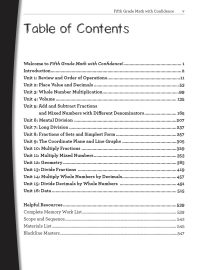
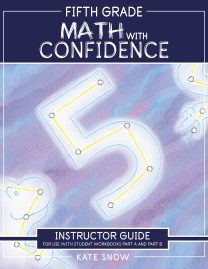
Fifth Grade Math with Confidence Instructor Guide
0 out of 5Starting at:$36.95Original price was: $36.95.$27.71Current price is: $27.71. Select options -
Sale!

Hansel & Gretel and Other Stories: Downloadable MP3
0 out of 5$12.95Original price was: $12.95.$8.42Current price is: $8.42. Add to cart -
Sale!
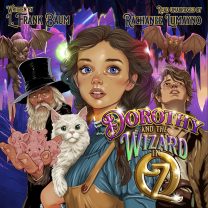
Dorothy and the Wizard in Oz: Downloadable MP3
0 out of 5$25.95Original price was: $25.95.$16.87Current price is: $16.87. Add to cart -
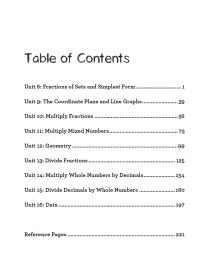 Sale!
Sale!
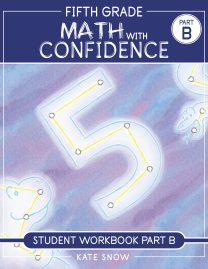
Fifth Grade Math with Confidence Student Workbook B
0 out of 5$16.46 – $21.56 Select options This product has multiple variants. The options may be chosen on the product page -
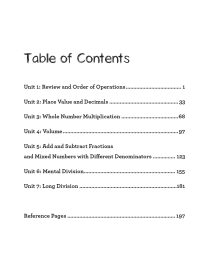 Sale!
Sale!
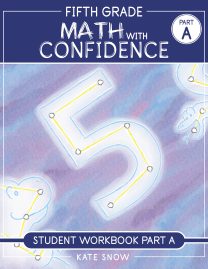
Fifth Grade Math with Confidence Student Workbook A
0 out of 5$16.46 – $21.56 Select options This product has multiple variants. The options may be chosen on the product page
ABOUT THE AUTHOR
Susan Wise Bauer
Join over 100,000 homeschooling families
For the latest offers, educational insights, products and more.
By joining you agree to our privacy policy.



